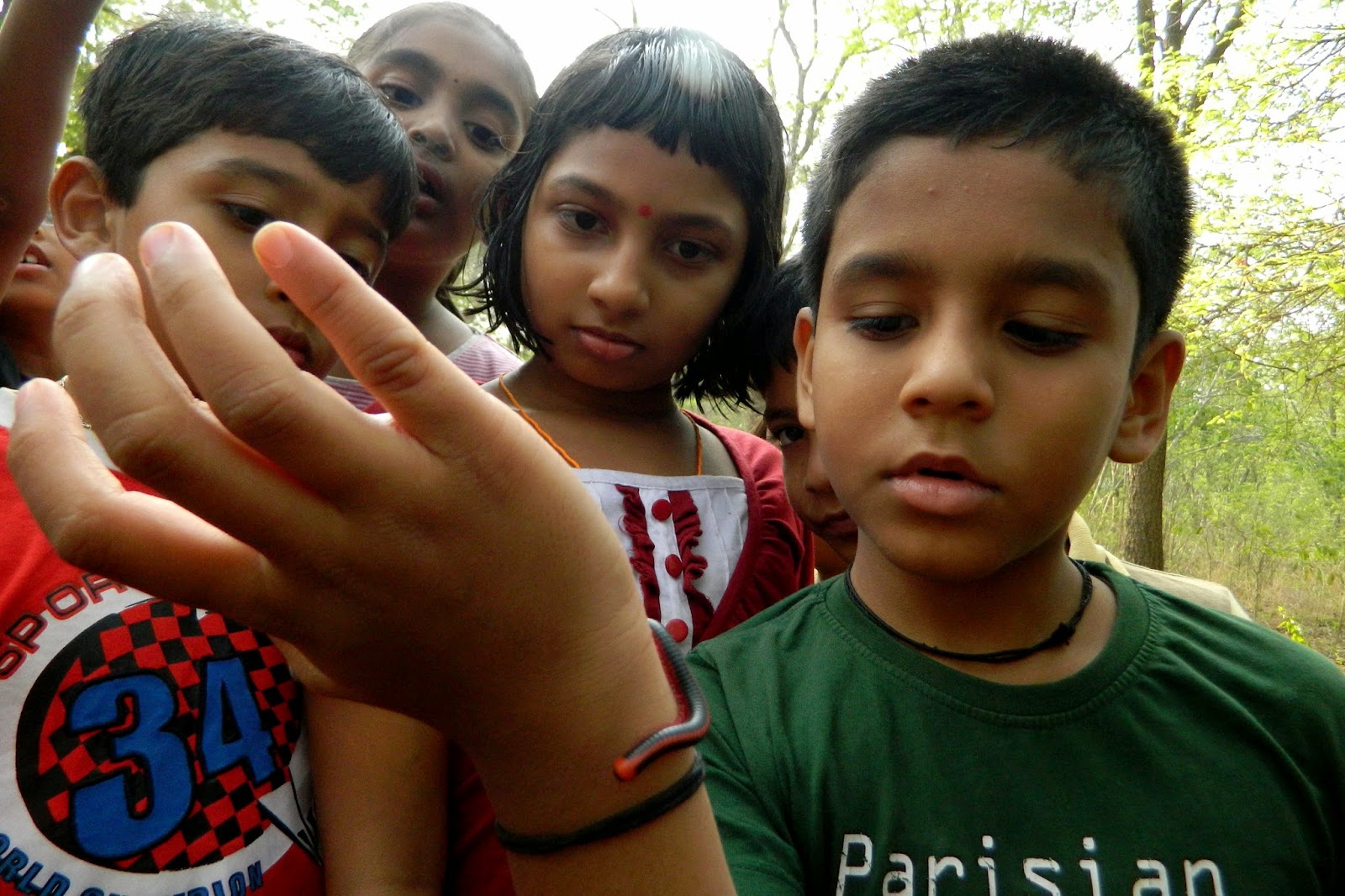 |
| Preparing their introduction with their self portraits |
The first of the camps of this
summer for children of 8 to 18 began at Hosa Jeevana Dari campus at Melkote in
a very informal way. The participants were as diverse as ever and trickled
in ones and twos. A child from Valley school, to the one from the school for
the hearing impaired, gathered on the platform of the beautiful old building.
The participating children and the parents had a common task of drawing their
own portraits and listing out what they wished from the camp. While the
children wished for games and time out in Nature for appreciating birds and
trees and having long treks, the parents had an opportunity to express what the
camp had to do for their children. Like for the children, it was not another
ice breaking exercise for the parents but was a shattering of pent up thoughts.
I am no psychologist to assess what their mental makeup was but could clearly
say most of them were worried in one way or the other. Each one of their
opinions or wishes was intriguingly concerning- about their child and the world
they would live in. They carried concrete challenges for teachers.
 |
| Mr. Chandregowda putting forward his opinion |
 |
| Self portrait of a parent |
It is past midnight and the children have all
slipped to sleep snuggling in their tents. I sit looking into the drawings and
the wish list of the parents.
Mr. Chandregowda, a retired head master, and
grand parent of Viva was deeply concerned about values. He felt that values,
like discipline are all simply on a run out and hence the camp should incorporate
prayer, yogic exercises and games to keep their spiritual insights in glow. In
fact one mother who didn’t make it to the camp site had already made a special
request with me to wake up her ten year old son half an hour earlier than the
rest of the children as he had to do yoga in the morning. But Mr. Vishwanath
who had driven all the way from Bangalore to give his daughter some leisure,
good friends of her age and lots of time to explore nature got perturbed. Probably
he was thorough in his home work and clearly knew that we were not a group who
were experts in that department. Mrs. Sudha Divakar was a teacher from a small
town K R Pet, and was more judicious in her approach. She did not expect much
from these five days, yet she elaborated a long list of things-building good
social and communication skills, writing skills, good behavior and a gamut of
talents. These issues must be touched upon through suitable activities she
felt. Regular schools never did justice in this regard but successfully put a
lot of stress upon the students in the form of homework and deadlines. She was
of the opinion that we really had to prioritize to give them free time to
explore, learn and enjoy their holidays.
 |
| Getting acquainted with the campus |
As though to add a strange twist
to the discussion Dr. Rajani felt that we take care of girl child and empower
them for the harsh society of ours towards them. Without mention of the
everyday tragedy of harassment, atrocities and crime against a girl child, her
tensed outburst opened the Pandora’s Box. The ‘stranger danger’ bug had crept
in her psyche and deeply set its roots. She was not ready to take any
explanation. No matter what your
background is and where you are, women in this country are not safe and she
felt their safety, and efforts to empower them should be prioritized over
protecting a tree or an endangered species!
 |
| A friendly chat with parents over the lunch-Kavitha and Gouri Lankesh |
Her husband Mr. Lokesh Mosale
however, tried to ease the situation by mentioning some of the basic tenets of
human relations essential for sustained friendship. Getting to know one
another, being open and sincere to each other are to be inculcated during the
camp. They need to be curious to know others emotions and feel for it said
Mosale and stressed upon imparting experiences of mental, physical and
emotional hardships. He opined that small quarrels and patch ups are essential
ingredients of good human relationship.
 |
| Pitching the tents |
All said and done the
participants in the camp have something different to say. More than three
fourth of them are girls. They have all outwitted our boys and cornered them in
every facet. In the days to come they will experience equal physical and mental
hardship. We hope by the end of the camp that every girl child is more
confident and bolder enough to challenges of the society.
 |
| A Film show for the evening. |

















































